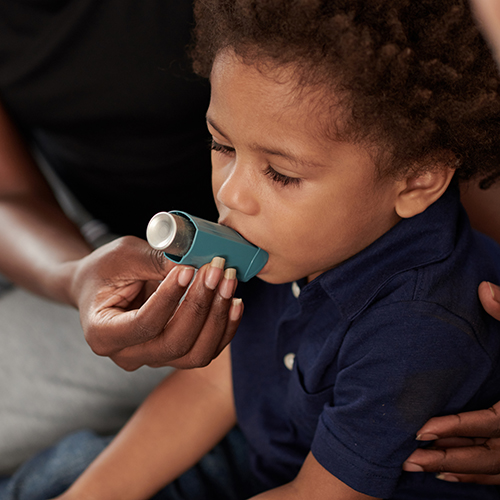March 2024
An allergy is when your immune system overreacts to an otherwise benign trigger, like pollen or pet dander. If you encounter one of these triggers — called an allergen — you may experience a range of symptoms, from sneezing, coughing, itchy eyes, or a runny nose to rashes, hives, asthma attacks, or severe trouble breathing.
In rare cases, people can die from allergic reactions to triggers like food, insects, or medications. This is a result of anaphylaxis, and left untreated, anaphylaxis can be fatal. Signs of anaphylaxis include:
- Swelling of the throat and tongue, so much that it is hard to breathe
- A very rapid heartrate
- A large drop in blood pressure
- Dizziness, faintness, or loss of consciousness
- Hives
- Gastrointestinal problems (like severe vomiting or diarrhea)
If you — or someone you’re with — is experiencing any of these symptoms, call 911.
Learn more about the common types of allergies, along with allergy symptoms, complications, and treatments.
Airborne allergies
Airborne allergies are allergies to things you encounter in the indoor or outdoor air. These triggers create problems when you breathe them in or get them in your eyes. Common symptoms include itchy eyes, a runny nose, and sneezing. In people with allergies and asthma, some airborne allergens may trigger asthma attacks.
Airborne allergens include molds, pet dander, dust (dust mite excrement), and pollen from trees, weeds, and grasses. People often call pollen allergies seasonal allergies. More than 25% of adults and almost 20% of children in the U.S. suffer from seasonal allergies.
Skin allergies
Skin allergies are allergies that you experience when your skin comes into contact with an allergen. Common triggers include plants (think poison ivy, poison oak, poison sumac, and cow parsnip), latex, and certain types of metal (like nickel, which is found in some jewelry). Some people may be triggered by chemicals in personal care products, laundry soaps, or fabric softeners.
Symptoms of exposure to a skin allergen include rashes, hives, and eczema. Symptoms may not appear immediately after contact but may instead appear hours or days later, sometimes making it tricky to pinpoint the trigger. Roughly 20% of people experience skin allergies from contact with a skin allergen.
Food allergies
Most food allergies are caused by one of these nine foods: milk, soy, eggs, wheat, peanuts, tree nuts, sesame, fish, and shellfish. Sesame allergies are on the rise, though no one is sure why. Currently, roughly one million people in the U.S. are allergic to sesame.
Symptoms of food allergies can include skin problems (like hives or eczema), gastrointestinal problems (like abdominal pain, nausea, vomiting, or diarrhea), respiratory issues (like congestion or trouble breathing), dizziness, or even fainting. For some people, food allergies can cause anaphylaxis — a serious allergic reaction that can be fatal.
The FDA requires that food manufacturers clearly disclose on their labels when any of these nine common food allergens appear in their products.
True food allergies are different from food intolerances, like lactose intolerance or gluten sensitivity. Food allergy symptoms are caused by a reaction of the immune system, while food intolerance symptoms are not.
Insect allergies
About 5% of the population has an allergic reaction to stings and bites from certain insects, especially bees, wasps, and ants. People with insect sting allergies are at risk of anaphylaxis if they are stung. Every year, roughly 100 people in the U.S. die from anaphylaxis due to insect bites.
Drug allergies
The most common drug allergy is to penicillin, with roughly 1% of people experiencing a true penicillin allergy (roughly 10% of the population thinks they have a penicillin allergy). Symptoms of a drug allergy can be moderate, like hives and rashes, but such allergies can also cause anaphylaxis.
Drug allergies are the most common cause of death from anaphylaxis. As with other causes of anaphylaxis, if you or someone you love is experiencing any of these symptoms, call 911.
Allergy treatments
If you’re experiencing less severe allergic reactions — or struggle with chronic or seasonal allergy symptoms — talk to your doctor or an allergist. Allergy testing can help pinpoint your allergy triggers. Then, you can work with your healthcare provider to develop an allergy management plan, which may include reducing exposure to known triggers, taking over-the-counter allergy medications, and getting regular allergy shots.
Those who have severe allergies and are at a high risk for anaphylaxis may receive a prescription for injectable epinephrine (also known as an EpiPen), a potentially lifesaving drug that can temporarily reduce symptoms of anaphylaxis until you get to the ER.



